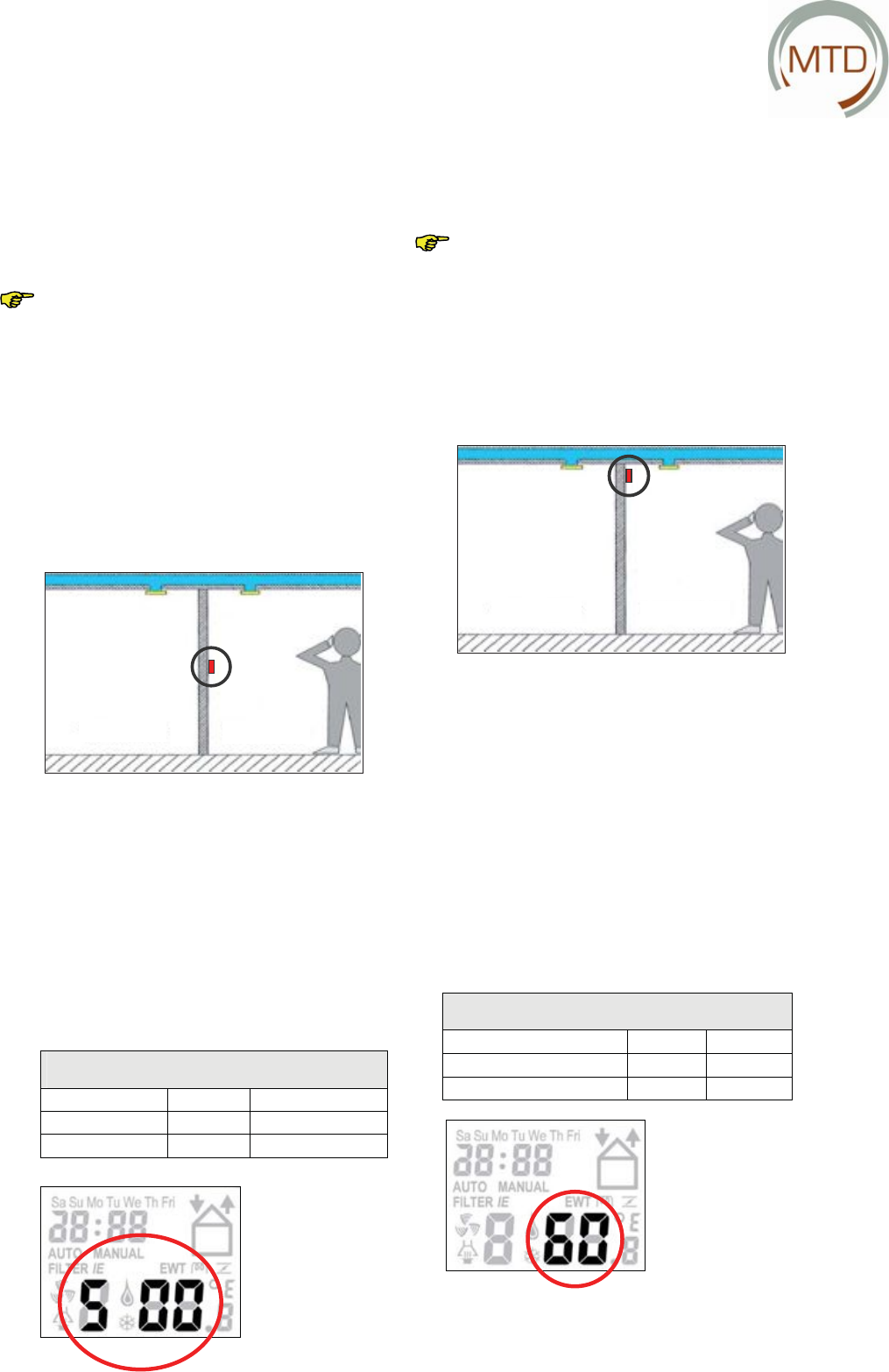
Living space
Living space
Menu P27:
Setting CO2 concentration
v CO
2
concentration
Minimum ppm to be decided
v CO
2
concentration
Standard ppm to be decided
v CO
2
concentration
Maximum ppm to be decided
Living space
Living space
Menu P28:
Setting the humidity level
v Humidity level
Minimum 0%
v Humidity level
Standard 60%
v Humidity level
Maximum 100%
21Function of the System
3
the set comfort temperature. This temperature
can, however, be altered by the user (for further
information, see section 2.3.2). The installer sim-
ply has to indicate whether or not a post-heater
has been integrated into the ventilation system
in menu P55 of the CC Ease operating unit dur-
ing installation of the MTD-ERV 350 (for further
information, see section 4.4).
gnidnopserroc eht dna retaeh-tsop ehT
temperature sensor must be connected
to the PCB panel (extended version) of
the MTD-ERV 350 by the installer.
3.4.4 CO2 Sensor* in the Home
A CO2 sensor can be connected to the MTD-ERV
350.
This CO2 sensor allows the MTD-ERV 350 to
regulate the CO2 concentration in the house. For
this, a CO2 sensor is installed in one of the living
rooms to measure the current CO2 concentration
in the indoor air.
If the CO2 concentration is too high compared
with the set (and hence highest admissible) CO2
concentration, the settings of the supply and ex-
haust air fans will be gradually increased to re-
duce the CO2 concentration. In this way the air
in rooms with a high carbon dioxide concentra-
tion that can occur, for example, during a party
with a large number of people, can be quickly 'ex-
changed' by additional ventilation. The user can
set the maximum admissible CO2 content (within
the given limits) himself in menu P27 via the CC
Ease operating unit (see also section 2.3.7). The
following CO2 concentrations can be set:
The starting
point for this
CO2 control is
the assumption
that the outside
air is generally
the fresh(er) air.
The CO2 con-
centration can
be reduced by
this system in
that (a) fresh air is drawn in faster with the supply
air fan, and (b) the old air is drawn off faster by the
exhaust air fan. As soon as the CO2 concentra-
tion in the house has reached acceptable values
again, the settings of the two fans are gradually
reduced again.
ot detcennoc eb tsum rosnes 2OC ehT
the PCB panel in the electronics casing
on the top of the MTD-ERV 350 by the
installer.
3.4.5. RH Sensor* in the Home
A RH sensor can be connected to the MTD-ERV
350.
This RH sensor allows the MTD-ERV 350 to regu-
late the relative humidity in the house. For this, an
RH sensor is installed in one of the living rooms to
measure the current relative humidity of the indoor
air.
If the humidity is too high compared with the set
(and hence highest admissible) humidity, the set-
tings of the supply and exhaust air fans will be
gradually increased to reduce the humidity. Living
rooms with an excessively high humidity, such as
bathrooms during showering, are quickly freed of
the humidity by the additional ventilation. Prob-
lems due to high humidity can thus be avoided in
this way. The user can set the maximum admis-
sible humidity (within the given limits) manually in
menu P28 via the CC Ease operating unit (see
also section 2.3.7). The following humidity levels
can be selected:
The starting point
for this humidity
control is the as-
sumption that the
outside air is gen-
erally the dry (dri-
er) air. The humid-
ity can be reduced
by this system in
that (a) dry air is
drawn in faster with the supply air fan, and (b) the
humid air is drawn off faster by the exhaust air
fan. As soon as the humidity in the dwelling has
reached acceptable values again, the settings of
the two fans are gradually reduced again.


















